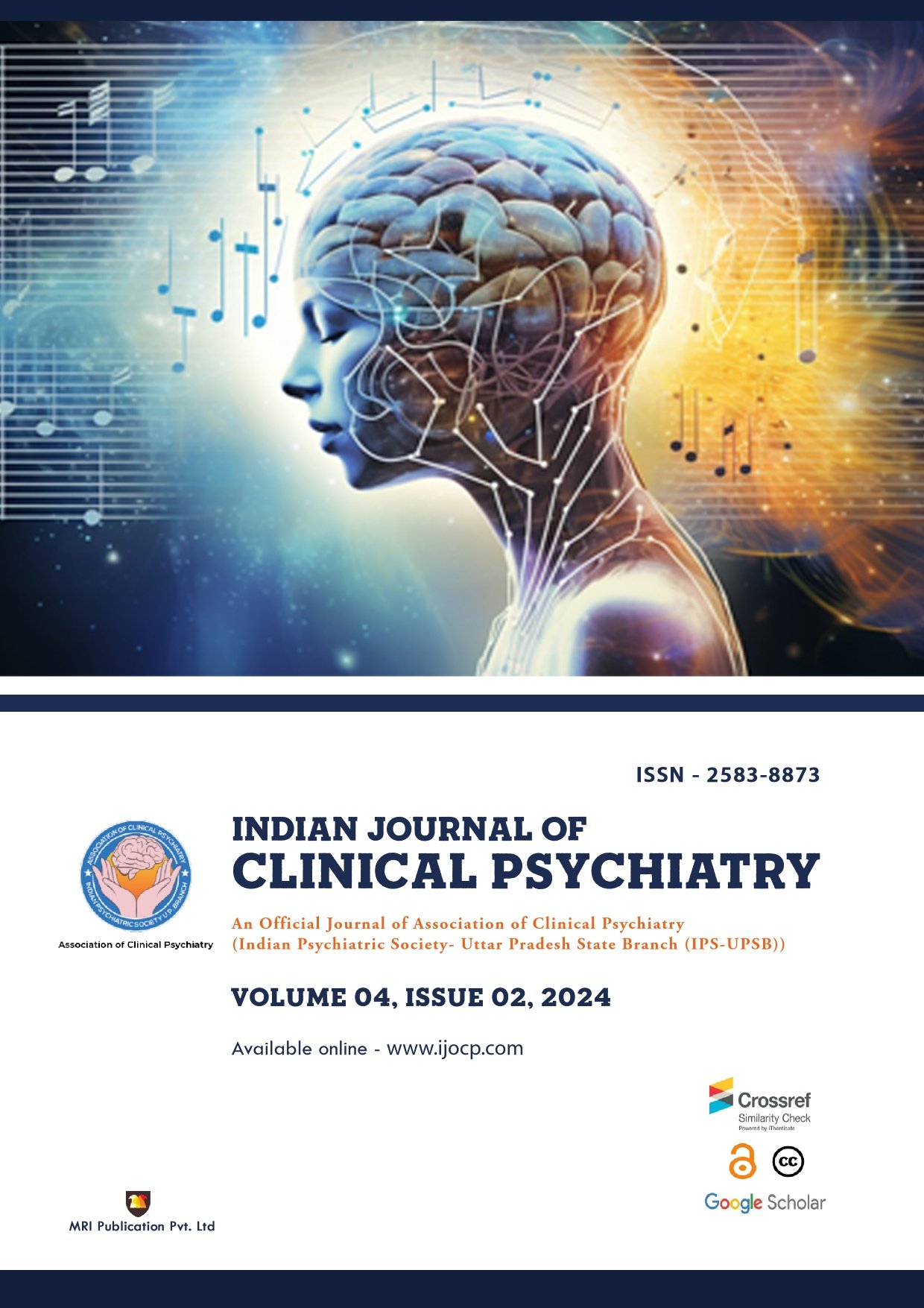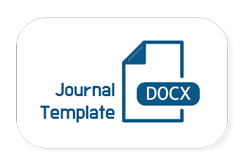Prevalence of Impostor Syndrome: Associations with Personality Traits and Social Comparison Among Undergraduate Students of a Medical College of Kolkata
Downloads
Published
Keywords:
Impostor Syndrome, Medical Students, Personality Traits, Anxiety, Social ComparisonDimensions Badge
Issue
Section
License
Copyright (c) 2025 Niragh Sikdar

This work is licensed under a Creative Commons Attribution-NonCommercial-NoDerivatives 4.0 International License.
Background: Objective: Methods: Results: Conclusion:Abstract
Impostor syndrome (IS) is a persistent internalised fear of being exposed as a fraud despite objective indicators of success. It is common in high-achieving academic settings, particularly among medical students, where it may impair mental health and academic performance.
To assess the prevalence of impostor syndrome among medical students and examine its associations with personality traits, social comparison tendencies, and anxiety.
A cross-sectional study was conducted among 132 MBBS students selected through stratified random sampling. Participants completed validated instruments: the Clance Impostor Phenomenon Scale (CIPS), Beck Anxiety Inventory (BAI), NEO-Five Factor Inventory (NEO-FFI), and Social Comparison Scale (SCS). Descriptive statistics, t-tests, Kruskal-Wallis H tests, Spearman's correlation, and multiple linear regression were conducted using SPSS v29.
Clinically significant impostor syndrome (CIPS ≥ 61) was present in 46.3% of participants. Neuroticism (r = 0.58) and anxiety (r = 0.52) were positively correlated with IS, while conscientiousness (r = -0.41), extraversion (r = -0.38), and favorable social comparison (r = -0.49) were negatively associated. Regression analysis identified neuroticism, anxiety, and social comparison as significant predictors (R² = 0.526, p < 0.001). Female and senior students reported higher IS levels.
IS is prevalent among medical students and is strongly linked to neuroticism, anxiety, and negative social comparison. Targeted psychological interventions focusing on emotional regulation and social evaluation may reduce IS-related distress and promote student well-being.
How to Cite
Downloads
Henning K, Ey S, Shaw D. Perfectionism, the impostor phenomenon and psychological adjustment in medical, dental, nursing and pharmacy students. Medical Education. 1998 Sept;32(5):456–64. doi:10.1046/j.1365-2923.1998.00234.x Prata J, Gietzen JW. The imposter phenomenon in physician assistant graduates. The Journal of Physician Assistant Education. 2007;18(4):33–6. doi:10.1097/01367895-200718040-00007 Craddock S, Birnbaum M, Rodriguez K, Cobb C, Zeeh S. Doctoral students and the impostor phenomenon: Am I smart enough to be here? Journal of Student Affairs Research and Practice. 2011 Oct;48(4):429–42. doi:10.2202/1949-6605.6321 Bravata DM, Watts SA, Keefer AL, Madhusudhan DK, Taylor KT, Clark DM, et al. Prevalence, predictors, and treatment of Impostor Syndrome: A systematic review. Journal of General Internal Medicine. 2019 Dec 17;35(4):1252–75. doi:10.1007/s11606-019-05364-1 Neureiter M, Traut-Mattausch E. An inner barrier to career development: Preconditions of the impostor phenomenon and consequences for career development. Frontiers in Psychology. 2016 Feb 4;7. doi:10.3389/fpsyg.2016.00048 Rohrmann S, Bechtoldt MN, Leonhardt M. Validation of the impostor phenomenon among managers. Frontiers in Psychology. 2016 Jun 2;7. doi:10.3389/fpsyg.2016.00821 Pourhoseingholi MA, Vahedi M, Rahimzadeh M (2013) Sample size calculation in medical studies. PubMed Sawant N, Kamath Y, Bajaj U, Ajmera K, Lalwani D (2023) A study on impostor phenomenon, personality, and self-esteem of medical undergraduates and interns. Industrial Psychiatry Journal/Industrial Psychiatry Journal 32:136 Costa PT, McCrae RR (1992) Normal personality assessment in clinical practice: The NEO Personality Inventory. Psychological Assessment 4:5–13 Clance PR (1985) Clance Impostor Phenomenon Scale. PsycTESTS Dataset. https://doi.org/10.1037/t11274-000 Allan S, Gilbert P (1995) A social comparison scale: Psychometric properties and relationship to psychopathology. Personality and Individual Differences 19:293–299 Beck AT, Epstein N, Brown G, Steer RA (1988) An inventory for measuring clinical anxiety: Psychometric properties. Journal of Consulting and Clinical Psychology 56:893–897 Villwock JA, et al. (2016). Impostor syndrome and burnout among American medical students. Int J Med Educ, 7, 364–369. Clance PR, Imes SA. (1978). The imposter phenomenon in high achieving women: Dynamics and therapeutic intervention. Psychotherapy: Theory, Research & Practice, 15(3), 241–247. Li S, et al. (2022). Neuroticism and imposter syndrome among students: The mediating role of self-esteem. Psychol Rep, 125(3), 1505–1523. LaDonna KA, Ginsburg S, Watling C. (2018). "Rising to the level of your incompetence": What physicians' self-assessment of their performance reveals about the imposter syndrome in medicine. Academic Medicine, 93(5), 763-768. doi:10.1097/ACM.0000000000002046 Chassangre K, Callahan S. (2017). "J'ai réussi, donc je suis chanceux": Le phénomène de l'imposteur et les attributions du succès. Journal de Thérapie Comportementale et Cognitive, 27(1), 32-40. doi:10.1016/j.jtcc.2016.06.002
References
Similar Articles
- R. K. Mahendru, A Private Psychiatric Specialty Hospital in Kanpur – Some Initial Experiences , Indian Journal of Clinical Psychiatry: Vol. 1 No. 1 (2021): Indian Journal of Clinical Psychiatry
- KC Gurnani, Managing an Unorthodox Society by Orthodox Psychiatry: The Pitfalls , Indian Journal of Clinical Psychiatry: Vol. 4 No. 01 (2024): Indian Journal of Clinical Psychiatry
- Prasad R Gundugurti, Shivangini Singh, Simhachalam Gurugubelli, Sri R Vemulakonda, Endoxifen Usage in Bipolar Disorders Patients: My Experiential Journey , Indian Journal of Clinical Psychiatry: Vol. 4 No. 01 (2024): Indian Journal of Clinical Psychiatry
- Arghya Pal, Discrepancies in the Diagnostic Guidelines Pertaining to Bipolar and Related Disorders , Indian Journal of Clinical Psychiatry: Vol. 2 No. 02 (2022): Indian Journal of Clinical Psychiatry
- Gayatri Bhatia, Yoseph Kale, Frog sweat misuse – emerging evidence from India , Indian Journal of Clinical Psychiatry: Vol. 4 No. 01 (2024): Indian Journal of Clinical Psychiatry
- Afzal Javed, Nazish Imran, Schools: A vital component of Child and Adolescent Mental Health , Indian Journal of Clinical Psychiatry: Vol. 3 No. 01 (2023): Indian Journal of Clinical Psychiatry
You may also start an advanced similarity search for this article.



